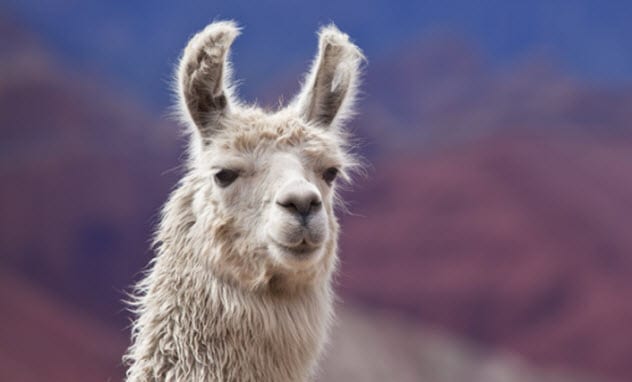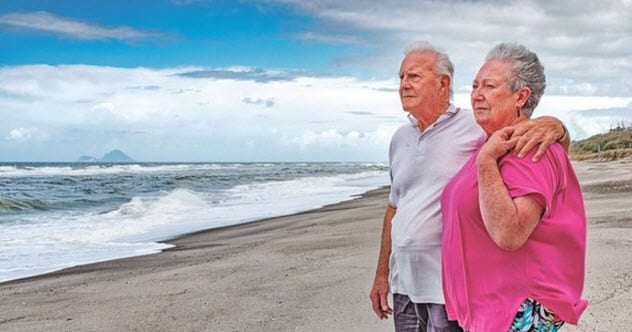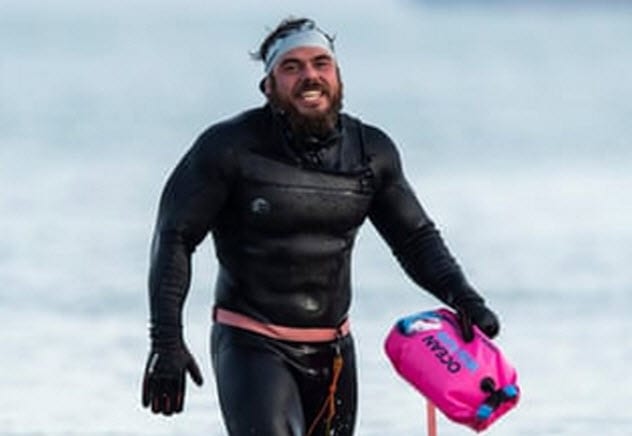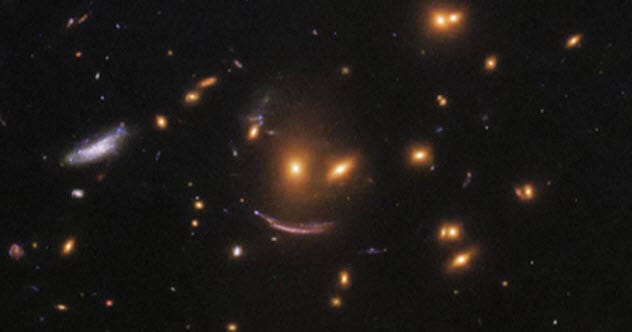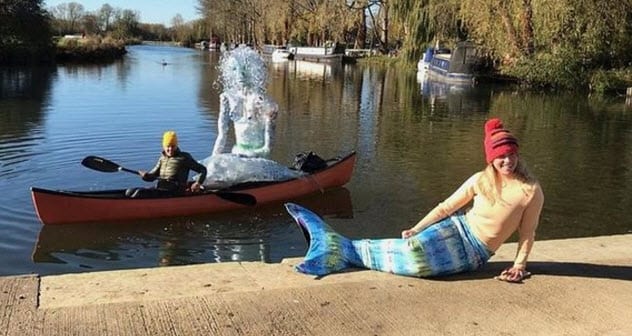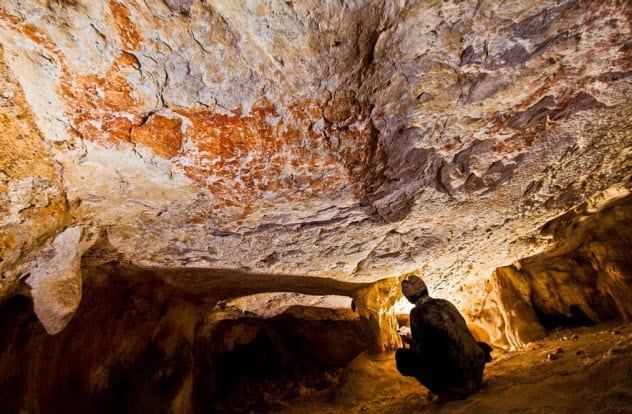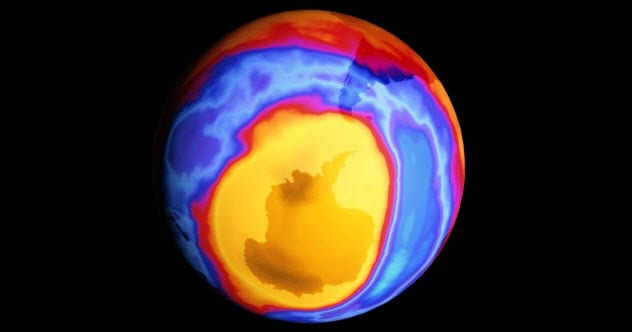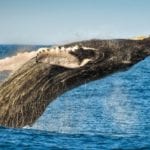We have a lot of nice tales for you this week. There is “The Fisherman and the Baby,” “The Mermaid Who Saved the Cow,” and that all-time classic “The Smiley Face of Galaxy Cluster SDSS J0952+3434.” There’s also good news about the ozone layer, a possible flu vaccine, and the fate of whale sharks.
10 Do Llamas Hold The Holy Grail Of Influenza?
A medical team from the Scripps Institute in California has found an unlikely ally in the fight against the flu—the llama. The biggest challenge when dealing with influenza is its adaptability. The virus can easily mutate and create new strains. This makes flu vaccines ineffective even when they are administered annually. So how can the llama help? Well, the animal produces antibodies much smaller than our own. Normally, our antibodies attack the virus by sticking to proteins on its surface. However, they tend to bind to the tips of the proteins and those are the areas which mutate most easily. Smaller antibodies can penetrate deeper and bind themselves to areas of the virus that don’t change so readily.[1] The California researchers isolated the four most potent llama antibodies and inserted them in mice infected with deadly doses of influenza to see how they would fare. According to Professor Ian Wilson, 59 of 60 viruses were neutralized and the one that survived doesn’t infect humans. The research is in its early stages, so it is hard to tell if it would work as a practical, global-scale solution for humans. But initial results are promising and could lead to the “Holy Grail of influenza”—a treatment that protects you from season to season against all strains and even pandemics.
9 Fisherman Rescues Ocean Baby
An 18-month-old baby boy had a miraculous escape after he was plucked from the sea by a fisherman who thought he was a doll. Last week, Jessica Whyte and her family were visiting Matata Beach on North Island, New Zealand, for the first time. They were sleeping in a tent at Murphy’s Holiday Camp when her infant son decided he didn’t want to wait for everyone else to wake up. In the early morning, he managed to undo the zipper of their tent and headed toward the water. Around the same time, Gus Hutt headed down to the beach to fish. As it happened, he decided not to go to his usual fishing spot that morning. Instead, he moved about 100 meters (330 ft) to the left. As he was checking his lines, Hutt saw a small figure floating in the water. It wasn’t moving, so at first, he thought it was a porcelain doll. Then it let out a little squeak, and Gus realized it was a live baby. He fished it out of the water, and his wife went to alert staff and emergency services. If Hutt had been a minute later or if he had fished at his regular spot, probably nobody would have seen the child float out to open water. Whakatane Police later confirmed that the baby is now okay.[2]
8 Man Swims Around Great Britain
After 157 days at sea, 33-year-old fitness buff Ross Edgley became the first man to swim around Great Britain and earned the Guinness World Record for the longest staged sea swim propelled only by muscle power. Edgley set off from the seaside town of Margate on June 1. He had to swim 2,882 kilometers (1,791 mi) to circumnavigate Great Britain. For over five months, he didn’t set foot on land. Edgley slept and ate on a catamaran while accompanied by a three-man team. He swam for 12 hours each day.[3] The swimmer actually earned the Guinness record after 74 days, less than halfway into his journey. However, he kept going to complete the circumnavigation. On the way, Edgley suffered 37 jellyfish stings, tongue rot, a suspected torn shoulder, and an open wound on his neck. His most dangerous moment occurred during a night swim in the Gulf of Corryvreckan off the coast of Scotland. A giant jellyfish attached itself to the swimmer’s face and stayed on for half an hour while he was passing through a whirlpool. Edgley completed his journey last Sunday. Three hundred other swimmers accompanied him on his last kilometer as he reached Margate harbor. This is the latest in a series of extreme feats performed by the athlete which also include running a marathon while dragging a Mini and climbing a rope the height equivalent of Everest in one sitting.
7 The Universe Smiles At Us
It’s good to see a friendly face, even in the cold, dark reaches of space. NASA posted an image taken by the Hubble Space Telescope depicting what looks like a smiley face in the SDSS J0952+3434 galaxy cluster. The “face” in question is actually just three galaxies. But the lower one looks like a sweeping arc of light, thus resembling a grin. According to NASA, that arc shape is a characteristic of a galaxy which has been gravitationally lensed. Its light has passed near a massive object, so now it appears to us stretched and distorted.[4] The shot was snapped by Hubble’s Wide Field Camera 3 which can take hi-res photos of distant galaxies. The telescope was viewing a stellar nursery in the aforementioned galaxy cluster and studying the giant clouds of gas to better understand the process behind the formation of a star.
6 The Story Of The Jubilee Houses
A few days ago, freelance writer Holly Dawson shared a story on social media she had heard about a local philanthropist in her village of Ringmer, East Sussex, England. He had bequeathed three houses to the council with the stipulation that they would only be rented to struggling young families at a monthly rate way below the standard for the area. The next day, Dawson woke up to 50,000 combined likes and retweets. Many people were incredulous of this mysterious benefactor. So Dawson went to investigate and find the real story. As it turns out, the philanthropist was real. His name was Ian Askew, and he had died in 2014 at age 92. A former Army captain and Military Cross recipient, Ian and his brother Gerald had once owned a fair bit of property in Ringmer, including two estates called the Wellingham House and Bentley Estate.[5] After Gerald died in the 1970s, Ian turned the Bentley Estate into two semi-detached cottages. He called them the Jubilee Cottages to mark the Queen’s Silver Jubilee in 1977. They were reserved for young couples waiting to get on the council housing list who paid a fixed rent of £100 per month. Later on, Ian moved out of Wellingham House into something smaller and the building became a home for people with learning disabilities. The Jubilee Cottages have been housing young couples for over 40 years. Nowadays, rent is £300, which is way below the average of £1,000.
5 Whale Sharks Get Ultrasound
Scientists performed the first underwater ultrasound of whale sharks in an effort to better understand their reproductive cycles and help protect the species. Even though it is the largest fish in the world and reaches lengths in excess of 12 meters (40 ft), the whale shark remains one of the most mysterious animals on the planet. Mostly, this is because the shark travels large distances and dives to depths of 1,800 meters (5,900 ft), which makes it hard to track. So far, we’ve yet to observe whale sharks mating or giving birth, but we’ve taken a giant step in the right direction. Over a two-week period, an international team of marine biologists performed ultrasounds on 21 large females off Darwin Island in the Galapagos. Japanese scientist Rui Matsumoto from the Okinawa Churashima Foundation used the same tools and procedure he employed on captive whale sharks. However, there were a few extra challenges. For starters, all the equipment had to be waterproofed. Furthermore, the diver performing the ultrasound was fitted with a propulsion system so that he could keep up with the underwater giants.[6] The project was, mostly, a success. Whale sharks have among the thickest skin on the planet so the images weren’t crystal clear, but they could, at least, confirm that none of the females were pregnant. One shark had follicles in her ovaries which could indicate that she is just beginning her reproductive cycle and could be on her way to mate.
4 Community Comes Together To Help Doughnut Shop
Loyal customers of a doughnut shop have been buying in bulk so the owner can close up early and spend time with his wife, who is recovering from an aneurysm. In the late 1970s, John and Stella Chhan came to the United States as refugees from Cambodia. In 1990, they opened Donut City in Seal Beach, California. Since then, their shop has become a local favorite among the community. So, when Stella stopped showing up for work, people noticed. The 63-year-old had suffered an aneurysm and was recovering at a rehab center. Her husband was eager to close shop as early as possible so he could go visit her. One of their regulars, Dawn Caviola, shared the story on private community network Nextdoor. Soon enough, the post spread on social media and lines began forming outside Donut City every morning. Normally, the shop would close at around 2:00 PM. Over the last few days, all the doughnuts were sold at 8:00 or 9:00 AM and John was free to go be with Stella.[7] Someone even offered to start a GoFundMe page for the Chhans, but John declined. He said he didn’t need the money and would rather have extra time to spend with his wife.
3 Mermaid Saves Cow From Drowning
A cow was saved from drowning in the Thames by a passing mermaid. Okay, so Lindsey Cole isn’t actually a mermaid. She is an activist raising awareness of the environmental dangers of single-use plastics by swimming 320 kilometers (200 mi) of the River Thames while dressed as a mermaid. She is planning to do the journey over a 22-day period while stopping to speak at schools along the way. Last Sunday, she was in Oxfordshire, accompanied by her mom and a support canoeist. She spotted a large white object near the shore which she initially believed was a sheet of plastic. The boat went to retrieve it from the water and discovered that it had “four legs and was mooing.”[8] Cole and her team called the emergency services. Firefighters managed to rescue the animal by tying a rope around it and hoisting it to dry land. They believe the cow most likely came to the river to drink from a nearby field and fell in.
2 Exploring The Origins Of Art
The history of art was pushed back a few thousand years as scientists from Griffith University in Queensland, Australia, found the oldest figurative painting in the world in a limestone cave in Borneo. The image is thought to depict a banteng, also known as the wild cattle of Borneo, with a spear protruding from its side. It is one of three paintings found in Jeriji Saleh cave in 1994. They were made with red ocher and are surrounded by hand stencils, a common sight found in many examples of ancient rock art. Only recently, the Australian team was able to use a technique called uranium series analysis to date the images. They calculated the age of calcite crusts which are plastered all over the walls of limestone caves and are formed when rainwater seeps inside. Crusts formed underneath the paint give a maximum age, while those on top provide a minimum age. According to the team’s calculations, the painting of the banteng is at least 40,000 years old. That would make it the oldest-known example of figurative art.[9] However, even the researchers behind the study admit there is room for doubt. The piece of calcite crust analyzed came from a weathered part of the painting where the pigments could not be definitively distinguished from pigments from a nearby hand stencil. It remains to be seen if the discovery holds up to scientific scrutiny.
1 The Ozone Layer Is Healing
For decades, we’ve been hearing only bad news about the ozone layer. But now it’s time for a bit of positivity as a new UN report says that the protective shield is successfully healing itself. In the 1980s, we discovered that there were holes in the ozone layer. They were mostly caused by man-made chemicals called chlorofluorocarbons (CFCs). This wasn’t ideal because the layer acts as a barrier against ultraviolet solar radiation. The situation reached its lowest point in the late 1990s when approximately 10 percent of the upper ozone layer had been exhausted.[10] In 1987, 180 countries signed up for the Montreal Protocol. It was an international agreement to limit the use of CFCs and find suitable replacements for these harmful chemicals. That was a giant step in the right direction, and now we are starting to see its effects. The report claims that the ozone layer in the Northern Hemisphere can be fully healed by the 2030s and in Antarctica by the 2060s.
